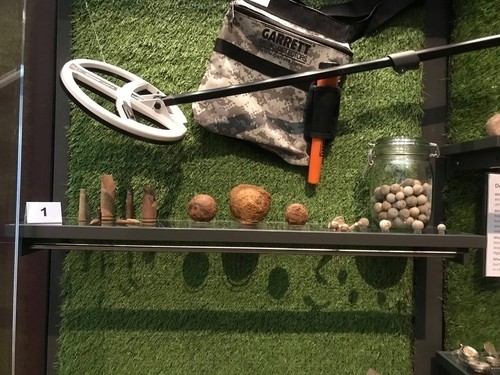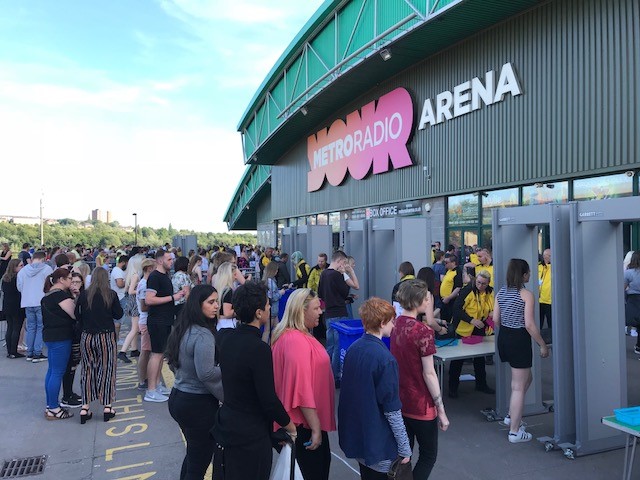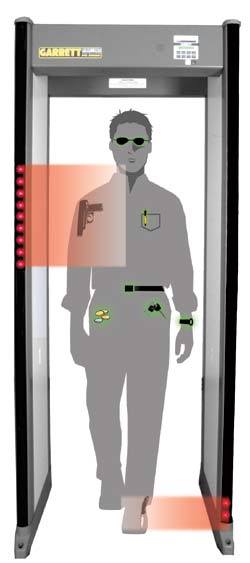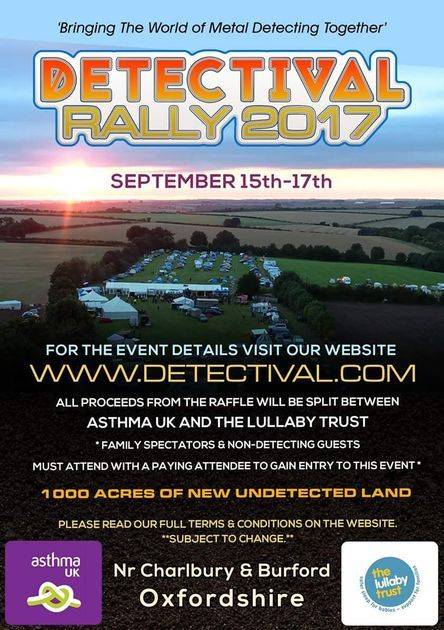A magnificent display of the metal detecting finds at the Royal Albert Memorial Museum & Art Gallery in Exeter. Regton ltd is honoured to have contributed to this exposition by loaning some metal detecting equipment. To see more details about the displayed items please go to https://mdfinds.co.uk/ramm.php#
Category: What’s New
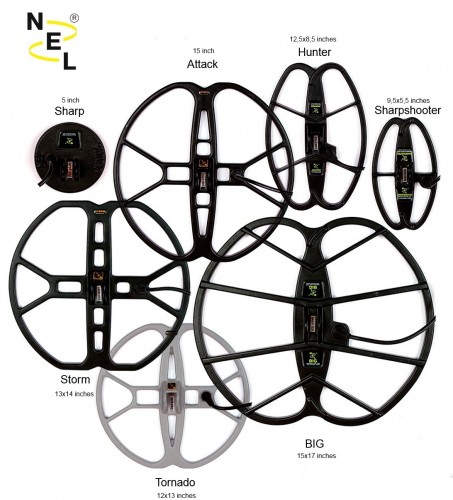
NEW Arrival – NEL Coils
A selection of NEW NEL coils for MAKRO NOKTA metal detectors available to purchase on Regton website. These new coils are suitable for Anfibio and Kruzer models. All NEL coils come with coil cover and fitting kit.
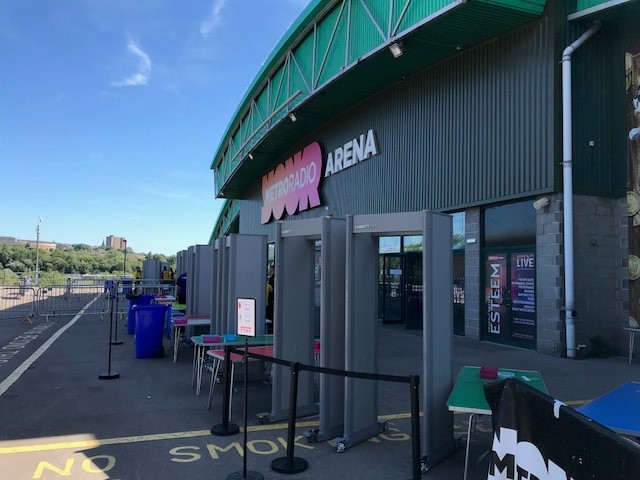
Regton goes to Katy Perry’s Witness: The Tour
Regton goes to Katy Perry’s Witness: The Tour, her latest UK & European tour.
REGTON LTD ARE DELIGHTED TO ANNOUNCE EXCITING DEVELOPMENTS IN VENUE SECURITY
Regton Ltd announce the introduction of Garrett walk through metal detectors at The Metro Radio Arena, Newcastle to replace and improve the current manual scanning procedure; with the aim of increasing the speed of entry as well as giving their fantastic security team’s arms and backs a rest, these arches will be a huge benefit to all in attendance of future events.
We installed ahead of Katy Perry’s concert on Monday 25th June where this time saving addition to their venue safety was in action for the first time. The detectors are quick and simple to use and will be a welcome development to further define their ongoing security needs, enhancing the customer experience and ease of entry into the venue with guest safety at the forefront of everything they do.
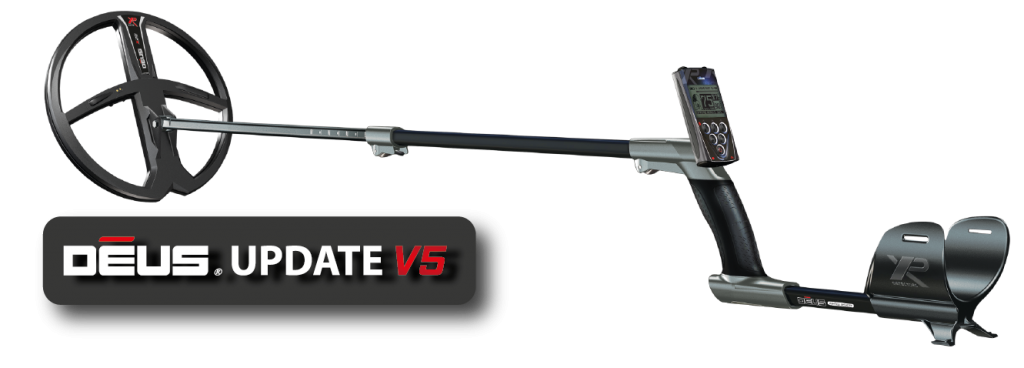
Deus version 5.0
New DEUS V5.0 update is now available to download from XP metal detectors website.
To download please follow the link below:
http://www.xpmetaldetectors.com/metal-detector/deus-update/
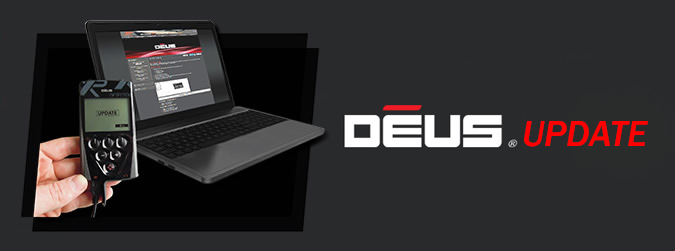
New Deus V4.1 Update
New DEUS V4.1 update is now available to download from XP metal detectors website.
To download please follow the link below:
http://regton.com/xp-deus-metal-detector.html

Deus version 4.1
Dear XP Customers,
Please note that from last week we started to deliver the DEUS with version 4.1 installed and will continue after our Christmas holidays.
The Deus version 4.1 update will be available to download from XP website at the beginning of January only.
Don’t hesitate to contact Nigel or Marcus at Regton, Gary Blackwell or any of the XP authorised dealers if you need further technical explanation about the 4.1.
All at XP would like to wish you a happy and exciting 2018!
Regards
ALAIN LOUBET – XPLORER Sarl
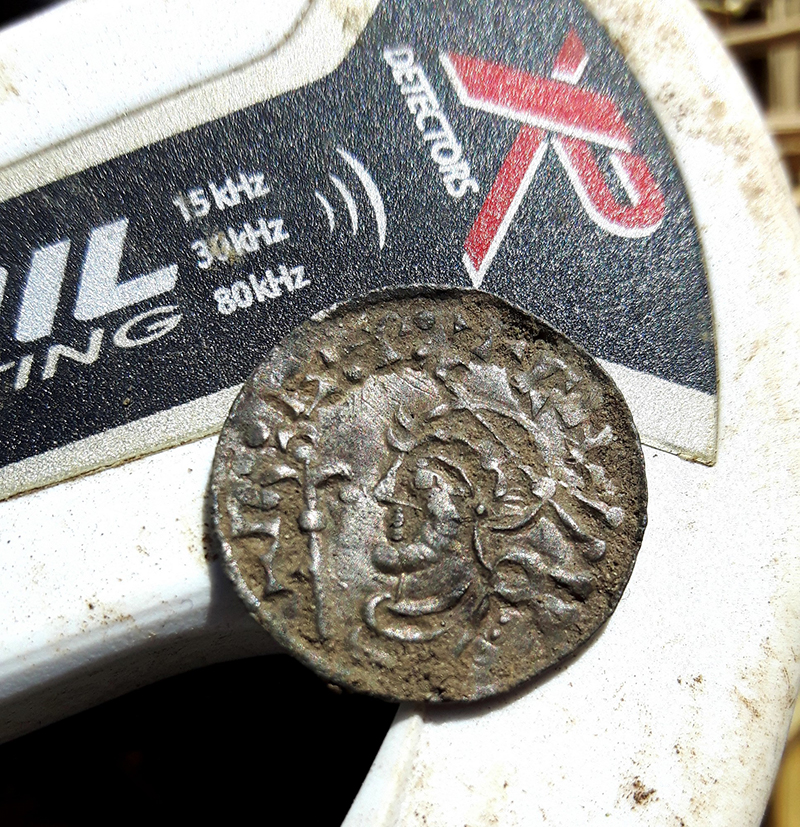
XP Deus Elliptical HF Coil
XP Deus Elliptical HF Coil
Adam Staples
I’ve been waiting 7 years for an elliptical coil for the Deus. Ever since I first tried the Deus on iron-infested ground, and realised its potential to open up these sites, I have longed for XP to take it one step further with a smaller coil. The small footprint of the new 9.5” x 5” coil combined with the higher frequency choice of 14/30/80khz meant I couldn’t wait to get my hands on one.
 After a few weeks of experimentation with the new coil, the combines finally started to roll and some of our favourite sites were becoming available. The elliptical had already proven itself useful, searching amongst the oilseed rape stubble and pulling out tiny finds that we had missed on previous searches, but now was the time to really put it to work on a contaminated site.
After a few weeks of experimentation with the new coil, the combines finally started to roll and some of our favourite sites were becoming available. The elliptical had already proven itself useful, searching amongst the oilseed rape stubble and pulling out tiny finds that we had missed on previous searches, but now was the time to really put it to work on a contaminated site.
Our venue for the day was a large wheat field, the stubble had been harrowed down and conditions were near perfect. Last year we had discovered a small Roman site, field-walking had revealed an abundance of Roman pottery and an area of occupation approximately 100m x 100m. The soil was black here, littered with iron targets both large and small and the good finds were mainly small Roman coins, a perfect challenge for the new elliptical coil.
 I started detecting around the edge of the main area using my 2 tone HF program, 30khz and reactivity 2.5. I really like the new 2.5 setting of V4, it is fast enough to get amongst the iron but still gives good depth on targets. Detecting in a straight line, my first pass of the site produced a few small pieces of lead before I hit the first Roman coin, a small bronze of the Emperor Gratian (AD 367 – 383). The HF coils really boost the signal from small items and this sounded much larger than it actually was. A few more bronze coins followed as I continued my line and then a much larger signal produced the first artefact of the day, a lovely 1st century Roman brooch from around 6” deep.
I started detecting around the edge of the main area using my 2 tone HF program, 30khz and reactivity 2.5. I really like the new 2.5 setting of V4, it is fast enough to get amongst the iron but still gives good depth on targets. Detecting in a straight line, my first pass of the site produced a few small pieces of lead before I hit the first Roman coin, a small bronze of the Emperor Gratian (AD 367 – 383). The HF coils really boost the signal from small items and this sounded much larger than it actually was. A few more bronze coins followed as I continued my line and then a much larger signal produced the first artefact of the day, a lovely 1st century Roman brooch from around 6” deep.
 When searching a productive site I always detect up and down in parallel lines to ensure thorough coverage. Eventually my search pattern took me to the edge of the most iron-infested and mineralised area of the site and it was here that I switched programs. I chose a customised version of the HOT program, running at 75khz, that I have been using recently with great success. The HF coils do not have the ID NORM feature of the standard coils, which means that at higher frequencies the numerical ID of a target is greatly increased. For instance: a medieval cut quarter coin typically registers around 45 at 18khz, but at 75khz it is around 85. When using a full tones program such as HOT, this means that the tone from a low-conductive item is much higher and stands out much more clearly. Combining this with the new negative discrimination of -6.4 meant that I was able to hear the full range of large and small iron in the ground whilst easily recognising the small non-ferrous targets lying within. The GB was set to 75 in manual, quite a difficult setting for general detecting but the HF coils are more stable than the standard coils at low GB and using full tones helped here. In full tones the good targets are clearly distinguishable from any ground noise and the new X/Y screen profile is another useful aid to target identification.
When searching a productive site I always detect up and down in parallel lines to ensure thorough coverage. Eventually my search pattern took me to the edge of the most iron-infested and mineralised area of the site and it was here that I switched programs. I chose a customised version of the HOT program, running at 75khz, that I have been using recently with great success. The HF coils do not have the ID NORM feature of the standard coils, which means that at higher frequencies the numerical ID of a target is greatly increased. For instance: a medieval cut quarter coin typically registers around 45 at 18khz, but at 75khz it is around 85. When using a full tones program such as HOT, this means that the tone from a low-conductive item is much higher and stands out much more clearly. Combining this with the new negative discrimination of -6.4 meant that I was able to hear the full range of large and small iron in the ground whilst easily recognising the small non-ferrous targets lying within. The GB was set to 75 in manual, quite a difficult setting for general detecting but the HF coils are more stable than the standard coils at low GB and using full tones helped here. In full tones the good targets are clearly distinguishable from any ground noise and the new X/Y screen profile is another useful aid to target identification.
 I set to work on the busy area and many more Roman coins followed. The elliptical coil is so precise amongst the iron and, searching slowly, it was possible to pick out the high tones right on the edge of iron signals. One of these signals produced my best find of the day, an Anglo-Saxon penny of King Cnut (1016 – 1035), a real surprise as this was my first hammered silver from this site. A second hammered, a small silver Venetian Soldino turned up shortly afterwards.
I set to work on the busy area and many more Roman coins followed. The elliptical coil is so precise amongst the iron and, searching slowly, it was possible to pick out the high tones right on the edge of iron signals. One of these signals produced my best find of the day, an Anglo-Saxon penny of King Cnut (1016 – 1035), a real surprise as this was my first hammered silver from this site. A second hammered, a small silver Venetian Soldino turned up shortly afterwards.
 The elliptical coil is really well suited to sites such as this and the higher frequencies enable the Deus to see through difficult ground, to find the tiny items and also larger targets that are being partially masked by iron or heavy mineralisation. The slim design makes it ideal for use when conditions are difficult either above or below the ground. Not only does this coil excel on contaminated soil, it’s also a very useful tool for searching amongst vegetation, stubble or on rough ploughed fields. This coil is only tiny but has had a big impact on my detecting, I finished the day with over 200 non-ferrous targets including 45 Roman bronze coins, two Roman brooches, a Medieval ring and two hammered silvers… my best day ever on this site.
The elliptical coil is really well suited to sites such as this and the higher frequencies enable the Deus to see through difficult ground, to find the tiny items and also larger targets that are being partially masked by iron or heavy mineralisation. The slim design makes it ideal for use when conditions are difficult either above or below the ground. Not only does this coil excel on contaminated soil, it’s also a very useful tool for searching amongst vegetation, stubble or on rough ploughed fields. This coil is only tiny but has had a big impact on my detecting, I finished the day with over 200 non-ferrous targets including 45 Roman bronze coins, two Roman brooches, a Medieval ring and two hammered silvers… my best day ever on this site.
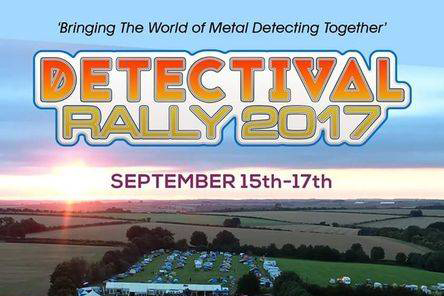
Detectival UK Rally 2017
Detectival UK Rally 2017
On 1000 acres of NEW land at a brand new undetected site.
We will be present at the Detectival with our Regton Stall.
Come and meet some well known personalities of the metal detecting world:
Beau Ouimette – Aquachigger – https://www.youtube.com/user/aquachigger/about
Alain Loubet from XP,
Henry Tellez from Garrett,
and many more.
For more information about the Detectival go to http://www.detectival.com/
We are looking forward to seeing you.

Metal detectorists unearthed Roman coin hoard in Cornwall
The pair had been detecting a ploughed field with metal detectors when they discovered the hoard of nearly 2000 roman coins mixed up with the remains of a pure tin container, with a handle and lead stopper, which it is believed had once contained the coins.
1,965 coins were found inside a stone-lined pit. They date from 253AD to 274AD.
The hoard was discovered by Kyle Neil, 18, from Scorrier, and Darren Troon, 45, from Redruth. They are members of the Kernow Search and Recovery metal detecting club.
The coins were taken away for inspection by Royal Cornwall Museum and the British Museum after their discovery. Details of the find were revealed at a Cornwall Coroner’s Court where coroner Emma Carlyon officially recorded that the hoard was classed as treasure.
The recovered coins are known as radiates. They are all made of bronze with one per cent silver. They were a common currency in the late Roman period. In about 260AD, Briton was part of a breakaway Gallic empire. The court heard from a report by an expert at the British Museum who was able to identify the following Roman emperors on the coins.
- Valerian, AD 253-60, 3 coins
- Salonina, 14 coins
- Saloninus, 1 coin
- Gallienus, AD 260-8, 130 coins
- Claudius II, AD 268-70, 164 coins
- Divus Claudius II, AD 270, 32 coins
- Quintillus, AD 270, 8 coins
- Aurelian, AD 270-5, 1 coin
- Postumus, AD 260-8, 1 coin
- Postumus (debased), AD 268-9, 6 coins
- Marius, AD 269, 1 coin
- Victorinus, AD 269-71, 188 coins
- Divus Victorinus, 1 coin
- Tetricus I, AD 271-4, 438 coins
- Tetricus II, 200 coins.
Of the rest, 78 coins were of uncertain Gallic origin, there were 54 where the emperor could be seen but not identified and 645 coins which were too badly corroded to be made out.
Perhaps of most interest is the remains of the tin vessel, although little of it has survived. Anna Tyacke, the liaison officer for the Portable Antiquities Scheme in Cornwall, said that it is a rare type of container for coin hoards, which are more often found in pottery.
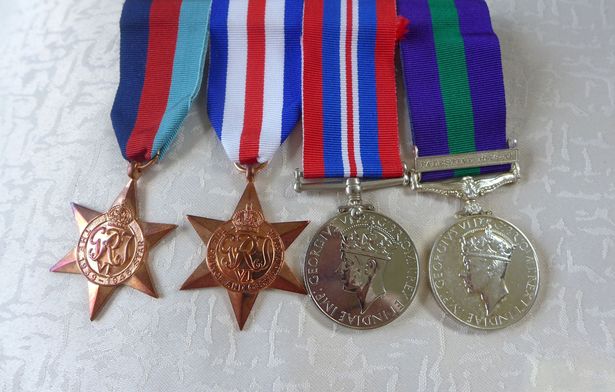
Midlands / Staffs Detectorists – Please can you help?
Midlands / Staffs Detectorists – Please can you help?
Blind 95 year old war hero Alfred Barlow recently lost his prized collection of war medals at Norton Cane Motorway Services near Cannock.
http://www.birminghammail.co.uk/news/midlands-news/blind-d-day-veterans-appeal-13221598
Trevor Beattie is offering £1000 to anyone who finds them and has organised a group of sea cadets to go to to Cannock services and scan the area for them TOMORROW MORNING – Friday 30th June.
BBC Midlands Today and other press will be attending and it would be fantastic if as many Detectorists as possible were able to come and help with the search also please?
Any questions please email Keaton – bbckeaton@gmail.com
Many thanks – lets find Alfred’s medals!!
